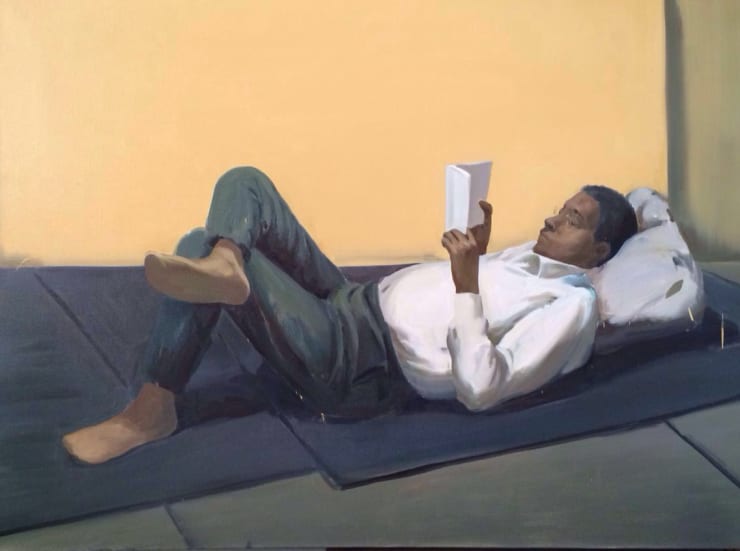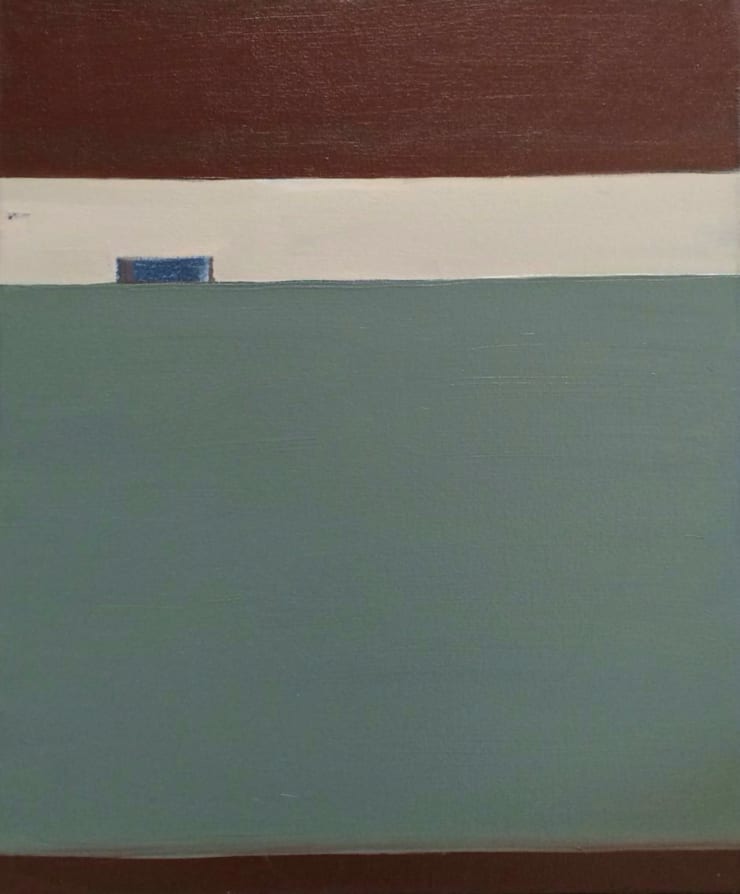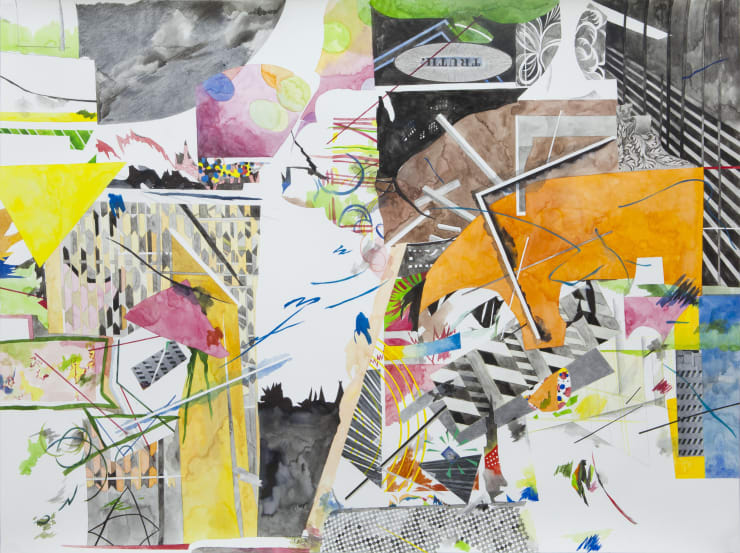翟倞 + 余果 + 毕蓉蓉
The Garden of Forking Paths
—Zhai Liang visual representation of literary representation
Text/Xu Sheng
The name of Zhai Liang’s current exhibition is The Garden of Forking Paths—Author, the third in a trilogy of exhibitions. The previous two exhibitions were titled The Garden of Forking Paths—Reader and The Garden of Forking Paths—Critic. The thread connecting them is Borges’s work of the same name, and together they form a complete process of introspective creation.
Borges’s story combines detective stories, fantasy, and philosophy to break down the intrinsic concepts of space and time and highlight the unknown and uncertain of the world. As Borges said, “The future is inevitable and precise, but it may not occur. God lurks in the gaps.” This short story shattered traditional European and American understandings of religion. It used the methods of deconstruction to re-examine human perception of the world, thereby gaining recognition as an important literary work of postmodernism. Leaving aside the beauty of the story’s plot and narrative, its unconstrained thinking methods provided a framework that helps us to see anew the relationships between humans, the relationships between things, and even the fluid nature of time. These relationships are not statically located in the study of logic or in sociological classes. Rather, they are based in a philosophical train of thought, reaching from Plato to Schopenhauer and Nietzsche, that emphasized experiential perception and rewrote the composition of fate and the world. As such, the novel creates an enormous, fable-like world that can be freely explored. Or rather, it provides a labyrinth of thought that one can infinitely reenter. This is the departure point for Zhai Liang’s work.
Zhai Liang paintings can be seen as passageways through which perception is transmitted. It allows the audience to accompany him in entering a constantly expanding garden of countless forking paths. The transmission of perception is a vital subject for painting. Therefore, Zhai’s work used the three perspectives of ‘Author,’ ‘Reader,’ and ‘Critic’, consinderring “The Garden of Forking Paths” as a specimen of perception. Using specimen analysis methods, he explores three unique methods for approaching their three different perceptions of the literary subject—the different paths by which they enter the “garden” and the different moments at which they become “lost.”
Throughout this process, Zhai Liang also serves as a painter and employs analytical methods that are completely rooted in a visual foundation. Through various pictorial contents and atmospheric structures, he brings an abstract visual style back to its origin in representational visual perception. To take one exhibited work as an example, the painting depicts a famous scene from the New York Metropolitan Art Museum. Looking down on the main hall from a high position, the surrounding floors create an almost abstract scene. In addition, the sofas and other objects that are placed in the hall look like a distant landscape. This painting appears to have no connection with the theme ‘Author,’ but it provides a visual landscape that allows one to connect with the the various thoughts that looking upon such a scene might produce. In this moment, the audience embodies the author and experiences the moment of inspiration.
If creating and reading form a kind of transmission of perception between people and novels, then Zhai Liang’s paintings are a visual representation of this transmission process. They are a secondary transmission of transmission, or a representation of representation. He allows the audience of the paintings to follow the visual experience and enter into the role of the author. Acting as an onlooker, their objective observation of the creative process produces ideas and reactions. Throughout, Zhai Liang carries out a painterly exploration based on a lineage of thought that emphasizes the philosophical connotations of expression. He presents a progressive examination of appearance. What is the state of literary creation? How can one build a literary logic from a world ruled by a diffused, chaotic space-time? How deep a resonance can painters have with this process? How can visual paintings represent the worlds of logic and literature that are currently being constructed? And, as Zhai Liang hints in one painting, how can they allow people to experience the “sweetness” within? His works display for us a scene that depicts this inspiration and imagination.
小径分岔的花园
——翟倞对文学再现的视觉再现
文/许晟
翟倞的本次展览名为“小径分岔的花园——作者”,是他“小径分岔的花园”三部曲的最后一部。前两部分别是“小径分岔的花园——读者”和“小径分岔的花园——评论”,三次展览以博尔赫斯的文学作品“小径分岔的花园”为线索,构成了一个自省的创作过程的整体。
这部小说将侦探,玄幻,哲学融为一体,打破了空间与时间的固有概念,突出了世界的不可知和不确定性,正如博尔赫斯所说:“未来是精确而且不可避免的,但未必发生,而上帝是潜伏在洞穴里的。”小说打破了欧美传统对宗教的认知,用解构的方式重新演示了人对世界的感知方式,并由此被认为是所谓“后现代”时期的重要文学作品。抛开小说的情节和叙事的魅力不谈,它开放性的思维方式本身就提供了一种框架,帮助人们重新看待人之间的关系,事件之间的关系,甚至时空之间的流转本身。这些关系不仅仅停留在逻辑学或者社会学层面,而是基于从柏拉图至叔本华和尼采以来的,注重经验感知的哲学脉络,重新书写了关于命运和世界本身的构成。因此,小说制造出一个巨大的,类似的寓言的,可以自由探索的世界。或者说,它提供了一个可以无限次重复进入的,思考的迷宫,而翟倞的创作就是从这里入手的。
翟倞的绘画可以被看作一种传递感知的通道,让观众随他一起进入那个至今还在不断延伸的,有无数分岔小径的花园。感知的传递是绘画的重要课题,为此,他的创作从“作者”,“读者”,“评论”三个角度进入, 将“小径分岔的花园”作为感知对象的样本,用样本分析的方式,探讨了三个不同的感知主体对待文学对象的不同方式——也就是他们进入“花园”的不同路径,以及他们“迷失”其中的不同时刻。
同时,作为一名画家,翟倞在此过程中采取了完全以视觉为基础的分析方法,通过不同的画面内容和氛围的营造,将抽象的感知方式用具象的视觉还原了。以本次展出的其中一幅作品为例,画面描绘了纽约大都会博物馆内的著名场景,从高处俯瞰的中庭和四周的楼层结构组成了一幅接近抽象画的场景。同时,中庭摆放的沙发等物件在视线中就像是远方的风景。这幅画似乎与“作者”这一主题并无联系,但它提供的视觉风景,却又让人联想到自己看到这一景象时可能产生的种种思绪。在这一刻,观众自己几乎就变成了作者本人,体验到灵感诞生的时刻。
如果说创作和阅读是一种人和小说之间的感知传递;那么,翟倞的绘画就是对这一传递过程的视觉再现,属于对传递过程的二次传递,或者说,是关于“再现”的再现。他让绘画作品的观众随着视觉体验进入到文学作者的角色当中,并从旁观的角度,对创作的主观过程产生想象和反思。而翟倞在此过程中以哲学内涵的表现方式为脉络进行的绘画探索,也呈现出逐层递进的深入面貌。文字的创作究竟是怎样的状态?如何将一个不断扩散的,打乱了时空顺序的世界以文字的逻辑建立起来?而画家对此过程可以有多深的共鸣?视觉的画面将如何重现一个正在建构当中的,逻辑和文字的世界?并且——就像翟倞在一幅画里所暗示的——让人感受到其中的“甜蜜”?他的作品就为我们展开了这幅关于灵感和想象力的画卷。










